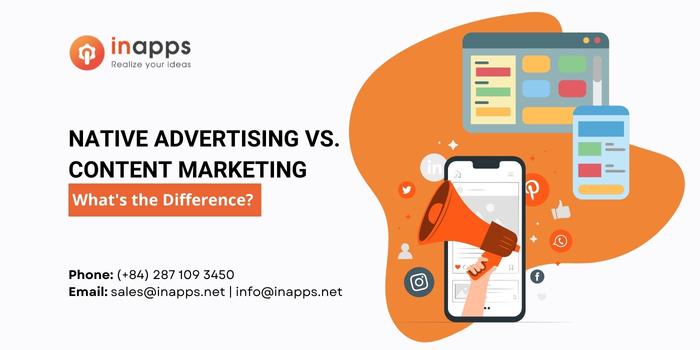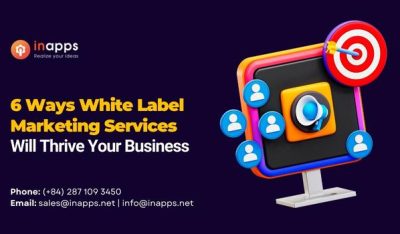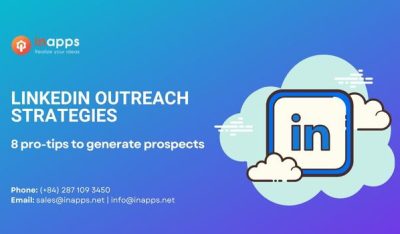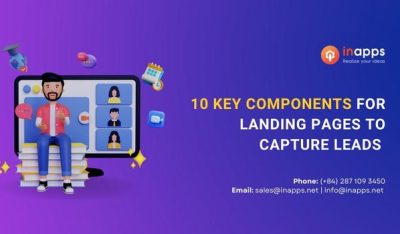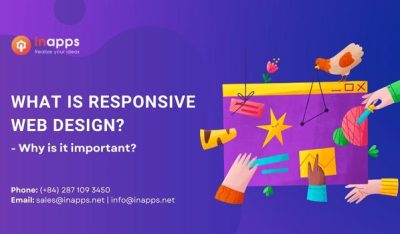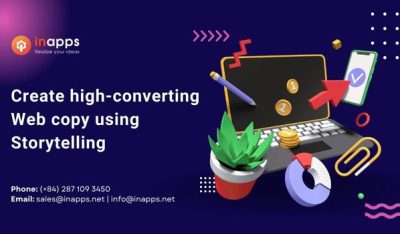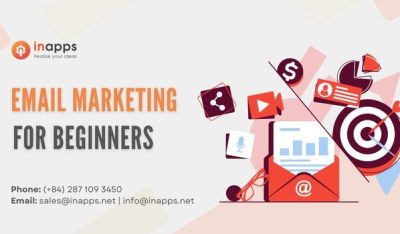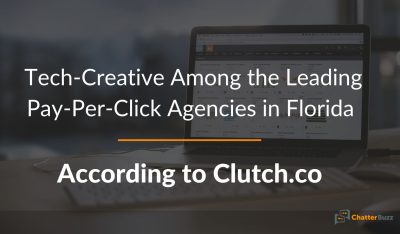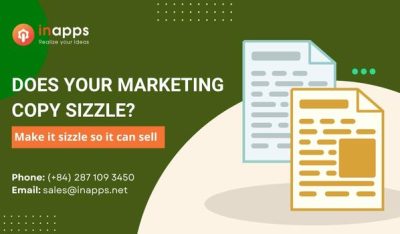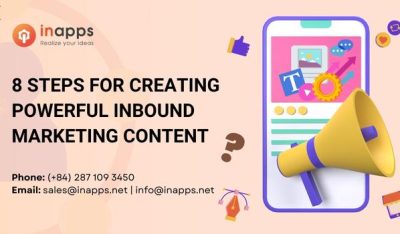- Home
- >
- Inbound Marketing
- >
- Native Advertising vs. Content Marketing: What’s the Difference?
Native Advertising vs. Content Marketing: What’s the Difference? is an article sent to you by the InApps editorial team. Hope readers will have more useful knowledge at www.inapps.net
Tell me, what comes to mind when you hear the term “native advertising”?
For one, many people mistake it for content marketing. But as a seasoned marketer, it’s important that you don’t make that mistake.
That’s why today, I’m going to explain both terms and show you the ideal scenarios to use native advertising and content marketing respectively.
So, in a nutshell:
Native advertising is a way to distribute content.
Content marketing, on the other hand, is the strategy of creating and distributing content. And so, simply put, native advertising is only a small piece of the big content marketing puzzle.
But of course, there’s more to that.
And so, let’s dig deeper into both, and see how they could help you.
Wondering when to use native advertising and content marketing? We list all scenarios in this free checklist
What is native advertising?
Native advertising is a form of online marketing that helps distribute branded content to target consumers.
The beauty of native advertising is that it allows marketers to promote content even without an editorial feed.
Here are some common types of native advertising you’ve definitely seen around:
Content recommendation widgets
If you’ve ever read articles online, you may have found yourself clicking on articles labeled “recommended for you” or “you may also like…”. Those are content recommendation widgets.
And as Forbes put it:
“Content recommendation widgets are good for publishers that want to increase their audience or for brands using content marketing for lead generation.”

Those widgets are a great way to attract new leads that are very similar to your target audience.
Promoted listings
Promoted listings are simply sponsored content placed on a webpage. (You can often tell them by the ‘SPONSORED’ tag).
But also, many publications allow advertisers publish sponsored content or other listings.
And, if you’re looking for a cost-effective type of native advertising, promoted listings might be for you. Sites like eBay don’t even charge sellers for the promoted listings until a sale is made.
Paid search ads
Similar to promoted listings, paid search ads tend to display a product or service on relevant webpages. The only difference is that paid search ads are always at the top of the page.
If this is reminding you of your last Google search, you’re right. Unsurprisingly, your first search results are often ads. Although paid search ads can still appear within private domains as well.
Like native advertising and content marketing, promoted listings and paid search ads are often mistaken for the other.
How to use native advertising in content marketing.
I’m sure you’ll agree:
There’s absolutely no point in producing content that won’t reach your target audience. And publishers agree.
I guess that’s why over 90% of content publishers have native offerings.
And as Content Marketing Institute explains it:
“Native advertising serves as a valuable extension of your content marketing rather than a concept to be considered in isolation. In the traditional breakdown of media types, it falls in the paid category alongside paid social and search engine marketing.” (Source)
And the role of native advertising within a content marketing strategy is to help reach that audience.
So, what is content marketing then?
Content marketing, on the other hand, is the strategy used for creating and distributing branded content to target consumers. It aims to tell an ongoing story about a brand that appeals to your audience.
Here are some of the most effective content marketing strategies:
Blog posts
Blog content helps attract relevant traffic and position you as a thought leader in the field.
And, it works.
For example, according to Hubspot,
“Companies that published 16+ blog posts per month got almost 3.5X more traffic than companies that published 0-4 monthly posts.“
How-to guides or ebooks
Practical guides and ebooks help attract and retain visitors. Simply.
And here’s how:
First, they help you establish your brand as an expert in your respective industry.
And then, they give you an opportunity to capture the email addresses of target consumers. This way, you can begin an email lead nurture workflow!
Internet videos
Content doesn’t always come in the form of words. And while internet videos have been around for awhile, video marketing is still an “up-and-coming” tactic.
In fact, ”43% of people want to see more video content from marketers”.
But even more importantly, ”51.9% of marketing professionals worldwide name video as the type of content with the best ROI”.
Great branded videos can draw viewers to consume more content on your website. Making again, a way to generate quality sales leads.
What’s the best type of content marketing for you?
Not every type of content marketing will be fit for your company.
That being said, there’s always going to be something that fits your needs and budget.
Let me explain further on when to choose and use content marketing or native advertising to maximize ROI.
When to use native advertising and its benefits.
Information distributed in native ads are usually specific and highly targeted. That means the ideal time to use them is when leads are researching options during the buying cycle.
This is because specific brand and product information just won’t appeal to audiences that aren’t interested in buying already.
Here, let me show you:
Let’s assume that you know your audience consists of HR managers. You can consider placing native ads on LinkedIn with actionable how-to guides.
This takes you outside of your own domain and Google search.
At the same time, you can narrow down your search boundaries. This could include targeting company size and people that have taken an interest in your older branded content.
Great, isn’t it?
One rule of thumb to follow when placing native ads is to always use strong and direct headlines to avoid miscommunication.
Unsurprisingly, one of the biggest pitfalls is using misleading headlines. This is because it generates clicks from unqualified leads. Or perhaps even duplicating offers to the same audience.
Simply make sure your team is using accurate headlines to avoid reducing the ROI of your native ads.
When to use content marketing and it’s why
“94% of small businesses, 93% of B2Bs, and 77% of B2Cs use content marketing”, according to Kissmetrics.
That’s pretty much everyone.
But just because everyone is using it, doesn’t mean the benefits are being maximized.

(Source)
Content marketing works best if you’re looking to reach and expand their audience.
And I know, it does sound like pretty much everyone, right? But that’s because, for the most part, it is.
Then again, having your content on product X is only half the battle. The second half of content marketing is distributing and making sure it reaches the target audience.
And this is where tools like native advertising come in.
Other great ways to promote content include:
- Social media
- Emailing your sources or references to read, share or link to your content
- Reaching out to people publishing similar content for backlinks
- Converting your content into a slidedeck or video to attract new audiences
- Turning content into a PDF for download
At the end of the day, the two best pieces of advice I could give you are:
Refine your content strategy.
And then, create outstanding content.
According to Content Marketing Institute and Marketing Profs’ study on B2B marketers, 66% of successful B2B marketers have a documented content strategy.
That’s a pretty high success rate for just having a refined strategy.
Conclusion
Even though native advertising and content marketing are used to achieve different outcomes, together, they create a great strategy to help distribute the right content to relevant users.
Amazingly, forecasts show that US native ad spend will grow 36.2% this year to reach $22.09 billion.
Follow this to make sure you’ve got Native Advertising vs. Content Marketing: What’s the Difference?. Save and share with those around you these extras.
To learn more about Inbound Marketing
Contact us:
www.inapps.net
List of Keywords users find our article on Google
[sociallocker id=”2721″]
| native advertising vs content marketing |
| content marketing vs native advertising |
| difference between content marketing and native advertising |
| content marketing and native advertising |
| lina wang |
| native advertising and content marketing |
| content marketing native advertising |
| native advertising content marketing |
| native vs content marketing |
| “content marketing institute” |
| content marketing och native advertising |
| “can anyone recommend content marketing” |
| “content marketing” |
| roi content marketing vs native advertising |
| difference between native advertising and content marketing |
| native content marketing |
| “native ads” |
| what is the difference between native advertising and content marketing |
| advertising vs content marketing |
| native advertising/content marketing |
| content marketing |
| “inbound marketing” |
| “hubspot sales blog” |
[/sociallocker]
Let’s create the next big thing together!
Coming together is a beginning. Keeping together is progress. Working together is success.




